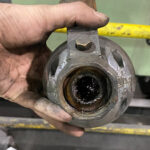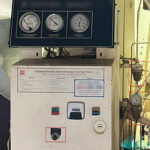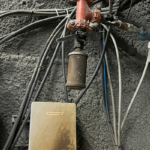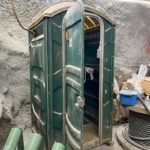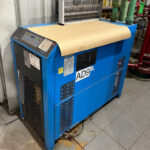A compressed air auditor was assessing a compressor and dryer installation within a compressor room and noticed something strange. On a large air dryer, the outlet flange was of 6-in. size, yet the piping used to connect the compressors and filters to the air dryer was only 4-in. Further to this, the long piping link […]
Compressed air fail: Crud in the lines
A compressed air auditor had a system of measuring devices that was monitoring a compressed air system located in a metal foundry. Pressure, flow, and compressor power were all monitored to help determine if the system was running efficiently and effectively. An additional set of instruments were added to the monitoring suite due to some […]
Compressed air fail: Drive by shooting
A compressed air auditor visited a large mine and was asked to look for areas of improvement. The mine’s manager was interested in reducing the electrical consumption and had a hunch that the compressed air system was a good item to investigate. The facility was a very mature site, so there were many large compressors […]
Compressed air fail: Obsolete compressor controls
Recently, a compressed air auditor ran across a newly rebuilt compressor at a wood products company. The unit was cleaned up nicely and had a shiny new air end due to a rebuild — but because the unit had obsolete controls, this compressor continued to run very inefficiently. Saving money by rebuilding this compressor was […]
Compressed air fail: Service factor
Quite often, people are surprised when they measure an air compressor and find the motor is consuming more than rated amps. One of the unfortunate things about the industry is that it is common to see motors are being stretched into the “service factor” in order to get more cfm out of a given compressor […]
Compressed air fail: Artificial demand
One hidden problem in many compressed air systems is something called “artificial demand.” Many users are unaware of the effects of this component of compressed air demand as evidenced by higher than needed compressed air pressures on most systems. Artificial demand in a compressed air system refers to the excess consumption of compressed air caused […]
Compressed air fail: Expensive air conditioning
Compressed air is useful for very many important tasks in facilities. However, due to the high cost of producing it, there are some end uses that are very wasteful. Air conditioning and ventilation is one such inappropriate end use. In a recent survey, a compressed air auditor found a surprisingly unique waste of compressed air […]
Compressed air fail: Corrupted VSD settings
When the equipment is new and set up correctly, the coordination of VSD air compressors with fixed speed units is quite easy — if the number of compressors in the mix is four or less. Typically, what should happen is the VSD compressor maintains trim position with all combinations of fixed speed compressors providing base […]
Compressed air fail: Hidden filter
A compressed air audit at a metal parts painting plant yielded some puzzling results. Pressure loggers were placed at the compressor discharge and in the plant, but the readings were showing an unexpected and significant pressure drop between the instruments. Visual checks showed that the only thing between the loggers was an air dryer with […]
How do you become a CAGI Certified CCASS?
By Ron Marshall You may have noticed some email signatures displaying the Certified CCASS symbol — and have become curious as to how that’s earned. Anyone, if properly prepared, can become certified by writing and passing an exam. The ease in preparing for the CAGI (Compressed Air and Gas Institute) Certified Compressed Air System Specialist […]


